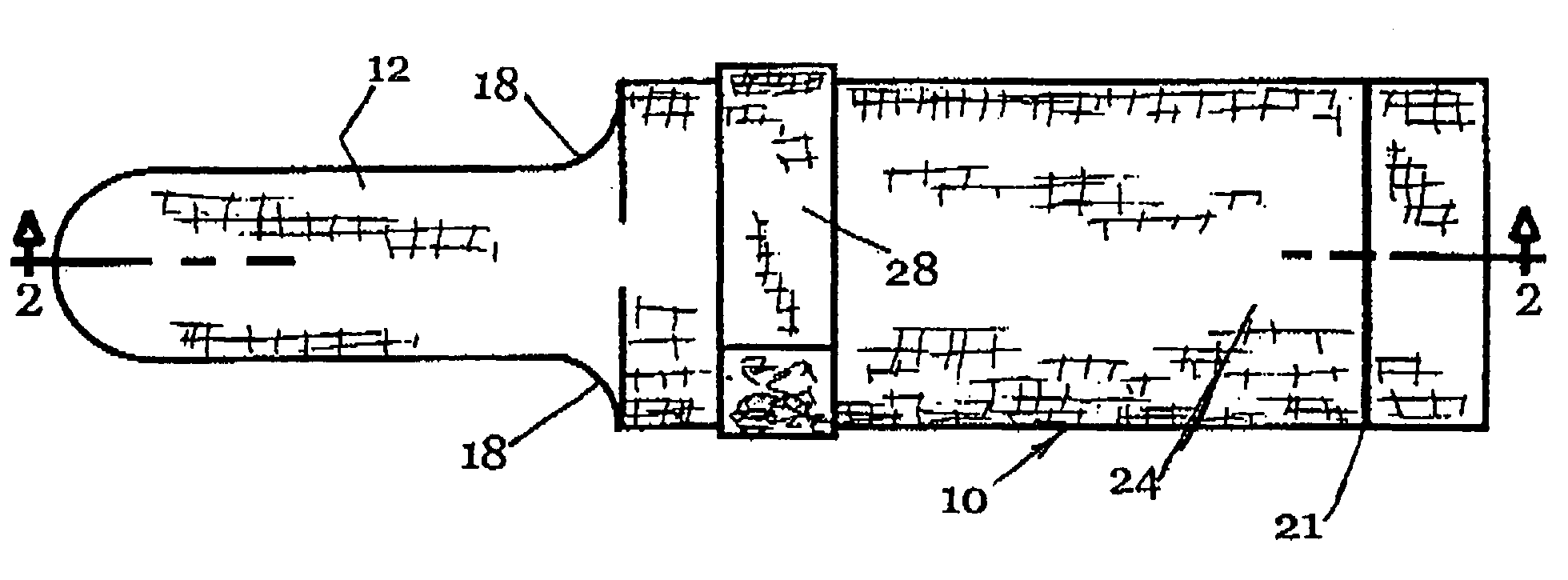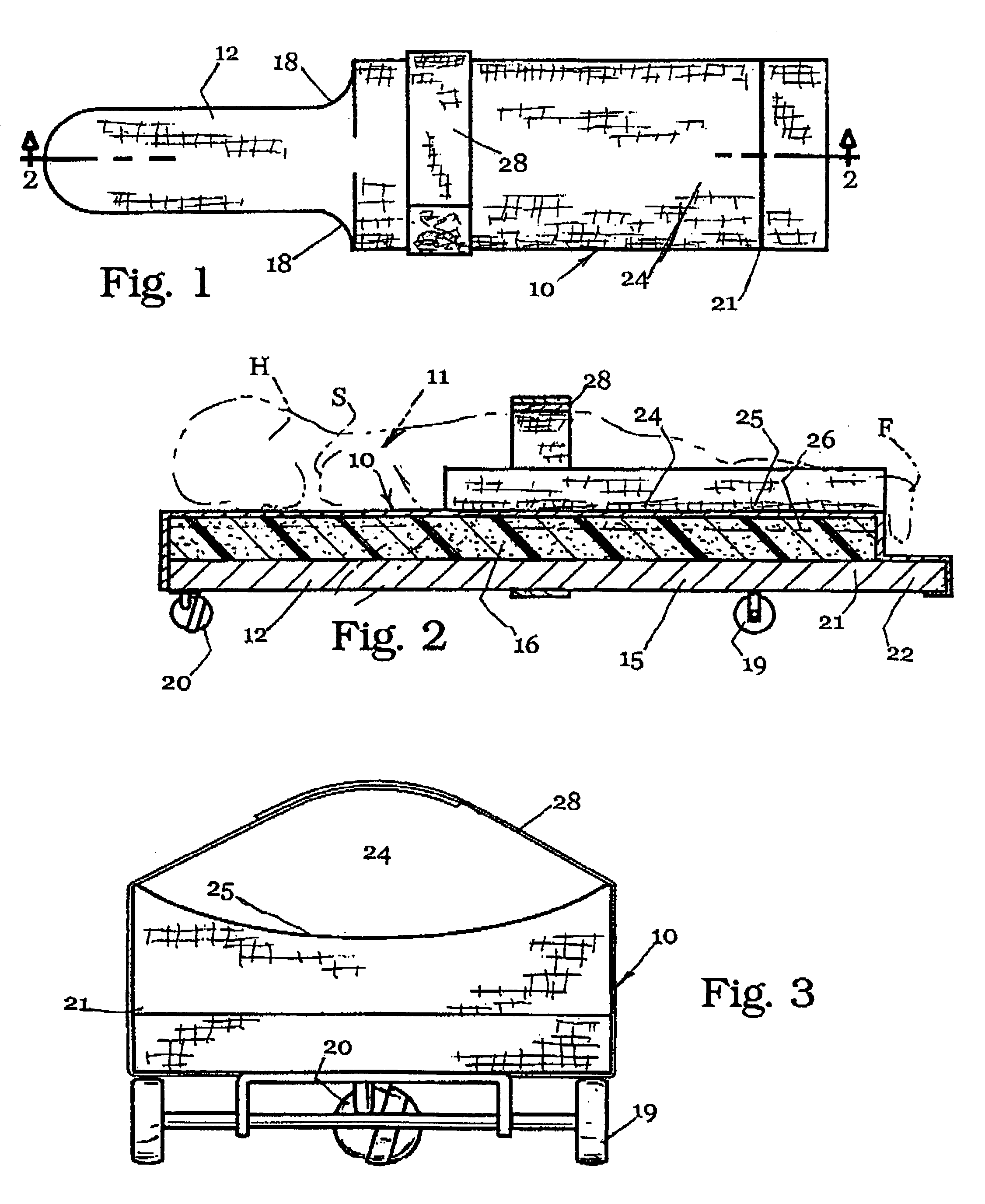Crawling aid for handicapped infants
a technology for infants and crawlers, applied in the field of crawling aids for handicapped infants, can solve the problems of affecting the crawling ability of infants, lack of upper body strength, affecting the development of infants, etc., and achieve the effect of reducing the use of the lower body and contributing to the comfort of infants
- Summary
- Abstract
- Description
- Claims
- Application Information
AI Technical Summary
Benefits of technology
Problems solved by technology
Method used
Image
Examples
Embodiment Construction
[0021]Referring now more particularly to the drawings and to that embodiment of the invention here presented by way of illustration, the crawling aid includes a platform 10 adapted to receive an infant thereon as shown in phantom at 11. The platform is narrower at the head end 12, which is at the left in FIGS. 1 and 2 of the drawings.
[0022]As is best seen in FIG. 1, the head end, or narrower portion 12 is for receiving the shoulders of an infant 11; and, the narrower portion 12 extends far enough to support the head of the infant at H.
[0023]Looking at FIGS. 1 and 2, it will be seen that the platform 10 is made up of a base 15 and a cushion 16. The base 15 may be made of any generally rigid material. In a prototype, the base 15 is made of fibrous pressed board, but metal, plastics, wood and other materials will serve as well. The material must be strong enough to hold a small infant and not be easily damaged, yet lightweight for easy maneuverability, and numerous materials meet these...
PUM
 Login to View More
Login to View More Abstract
Description
Claims
Application Information
 Login to View More
Login to View More - R&D
- Intellectual Property
- Life Sciences
- Materials
- Tech Scout
- Unparalleled Data Quality
- Higher Quality Content
- 60% Fewer Hallucinations
Browse by: Latest US Patents, China's latest patents, Technical Efficacy Thesaurus, Application Domain, Technology Topic, Popular Technical Reports.
© 2025 PatSnap. All rights reserved.Legal|Privacy policy|Modern Slavery Act Transparency Statement|Sitemap|About US| Contact US: help@patsnap.com



